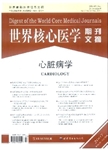非ST段抬高的急性冠脉综合征患者肾小球滤过率与随后死亡率的关系:来自5个心肌缺血溶栓治疗临床试验的13307例患者的观察结果
Association of glomerular filtration rate on presentation with subsequent mortality in non-ST-segment elevation acute coronary syndrome;observations in 13307 patients in five TIMI trials出 版 物:《世界核心医学期刊文摘(心脏病学分册)》 (Digest of the World Core Medical Journals(Cardiology))
年 卷 期:2005年第1卷第5期
页 面:27-28页
学科分类:1002[医学-临床医学] 100201[医学-内科学(含:心血管病、血液病、呼吸系病、消化系病、内分泌与代谢病、肾病、风湿病、传染病)] 10[医学]
主 题:急性冠脉综合征 ST段抬高 临床试验 肾小球滤过率 危险分层 出血事件 分类变量 连续变量 栓塞率 OPUS
摘 要:To determine the association of glomerular filtration rate (GFR) with clinical outcomes in the setting of non-ST-segment elevation acute coronary syndromes(NSTE-ACS). Data were pooled from five NSTE-ACS TIMI trials(TIMI 11A and B, TIMI 12, OPUS-TIMI 16 and TACTICS-TIMI 18) and were available in 13 307 patients. GFR was assessed as a continuous and a categorical variable(normal: ≥90 mL/min/1.73 m2,n=4952; mildly decreased: 60-89 mL/min/1.73 m2, n=6262; and moderately to severely decreased GFR: 60 mL/min/1.73 m2, n=2093). There was an independent association between decreasing GFR and mortality at 30 days (OR 1.19, 95%CI 1.12-1.27, p 0.001) and at 6 months (OR 1.16, 95%CI 1.11-1.22, p 0.001). The combination of TIMI risk score(TRS) and decreasing GFR provided further mortality risk stratification with highest 30-day and 6-month mortality rates among patients with the lowest GFR who also had a TRS ≥5(9.1%and 15.4%, respectively). Decreasing GFR was also independently associated with stroke and recurrent ischaemia at 30-days as well as with major bleeding (p 0.001). In the setting of NSTE-ACS, impaired GFR is associated with higher mortality as well as higher rates of thrombotic and major bleeding events, independent of TRS.



